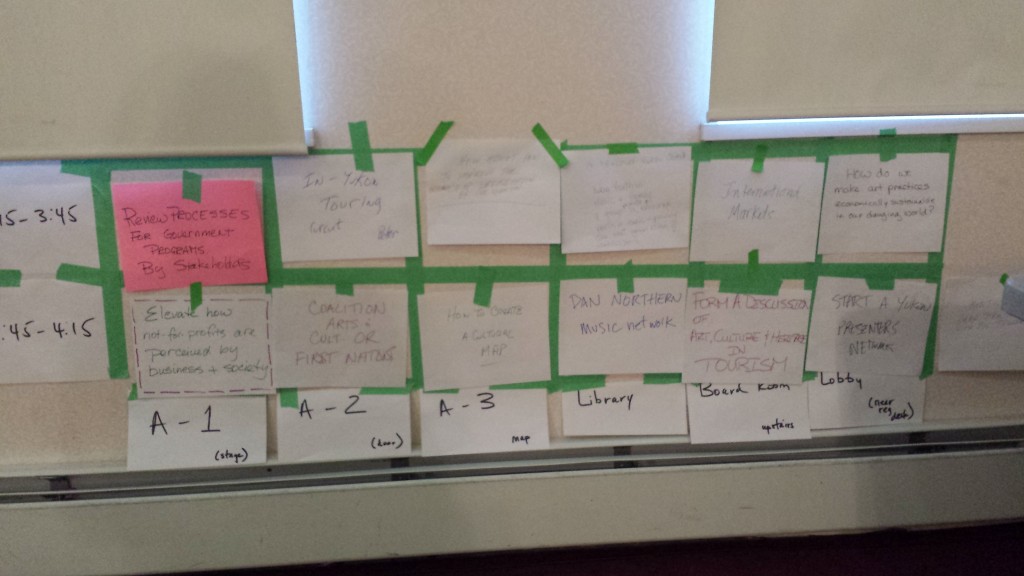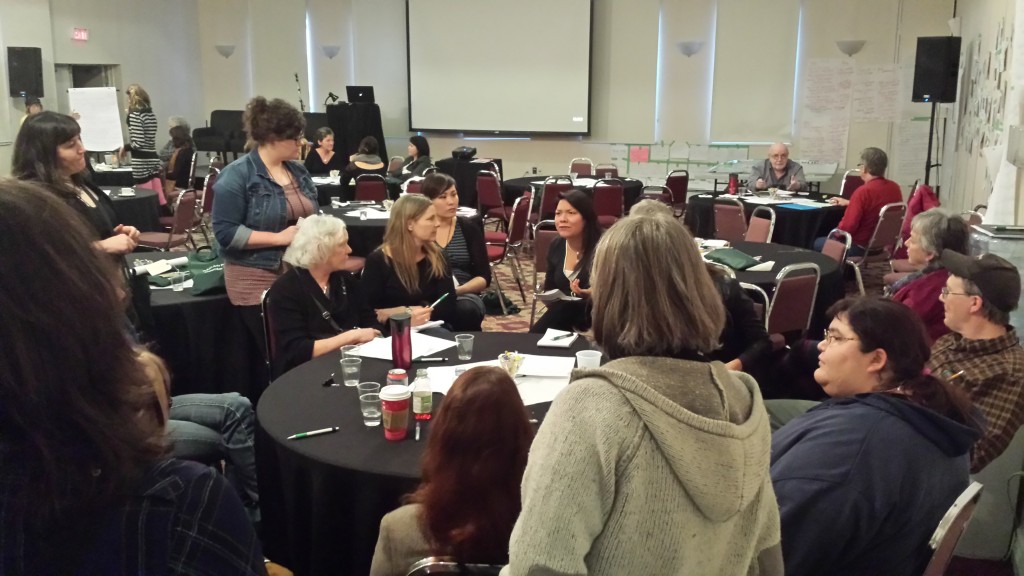An off-the-cuff remark during the recent SPARC Network Summit, was captured by Chad Ingram of the Minden Times:
“The idea that we’re all volunteer-run [in rural communities] . . . is that sustainable?” [Inga] Petri asked, pointing out that the arts is one of very few industries where people are expected to donate much of their time. “We would never imagine mining to work that way. We would never imagine forestry to work that way.” [Or fisheries for that matter: all industries that are also often located in rural or remote locations in the country.]
So why do we not need to have volunteers running mining companies, like they run community-based arts presenting organizations in many regions of Canada? Why do forestry companies not call for volunteers to support their operations or sales teams, as many arts organizations do? Why such a dearth of volunteers in integral oversight roles in fisheries or construction industries?
Don’t worry. I get it. The performing arts is a sector where labour productivity can’t so easily be increased (that Beethoven symphony requires the same number of musicians today as it did when it premiered), unlike what has been achieved in those other industries through automation and machinery with ever greater capacity requiring ever fewer people. Yet, at the same time labour costs in the arts have to keep pace with inflation and cost of living for artists and administrators (well, that isn’t always the case, but still costs have risen while productivity has not). One response to what has been called Baumol’s Cost Disease means that it is hard to imagine the arts and culture sector existing to the degree it does in Canada without massive volunteer involvement.
Volunteerism – doing useful things in an organized way without pay to make others’ and our own lives better – is a great attribute of being part of a vibrant community. Yet, especially in smaller communities in Canada, worries about attracting, training and retaining volunteers are common. People burn out from the demands of volunteering in the arts, volunteering at the local hospital and any number of charitable and not-for-profit organizations.
We collected pertinent information underscoring the importance of volunteering – and inferred the great importance it signifies in terms of the arts for Canadians – in the Value of Presenting study (links to PDF):
“(…) Canadians who volunteer in the arts and culture sector gave on average more time (127 hours per year) than those in any other sector in 2010. This represents an increase of 21% since 2007, the largest increase of any sector examined at a time when 6 out of 12 sectors registered a decline. (…) When considered in terms of total hours, the amount of volunteer time equates to about 100 million hours. That is equivalent to more than 50,000 full-time jobs.
(…) in the Survey of Performing Arts Presenters … [more than] half of survey participants report more volunteers than staff. The average ratio of volunteers is 17 for each paid staff member. (…)
The profound reliance on volunteers is even more evident among presenters of entire programming seasons in small communities under 5,000 people. They are less likely to have any staff and instead tend to be entirely volunteer run. These rural organizations rely on a day-to-day volunteer complement of an average of 36, with half reporting the use of 12 or fewer volunteers and half reporting more than 12. This increases to an average of 167 during the height of their operations.
I wonder whether this reliance on volunteers is sustainable. And whether it is sufficient to off-set the cost disease that has been diagnosed. And whether it is makes sense and is fair that so many functions (we can look at them as potential full-time jobs) are filled by unpaid labour?
To be clear, arts organizations have also undertaken other strategies to alleviate the inevitable pressures, including:
- Higher ticket prices
- Advocacy for greater public support
- Increase in private, corporate donations
- Renegotiating union contracts to reign in costs
While they do not address the underlying structure of the sector, each of these strategies has bought time for many organizations, even if not all in Canada, by generating needed income.
So, where do we go from here?
Well, one place I will go is to the CAPACOA conference in Halifax, where I will discuss Digitizing the Performing Arts and explore whether that could be “the holy grail” to shifting the performing arts presenting sector’s structure toward a new model that suffers less from this dynamic.





